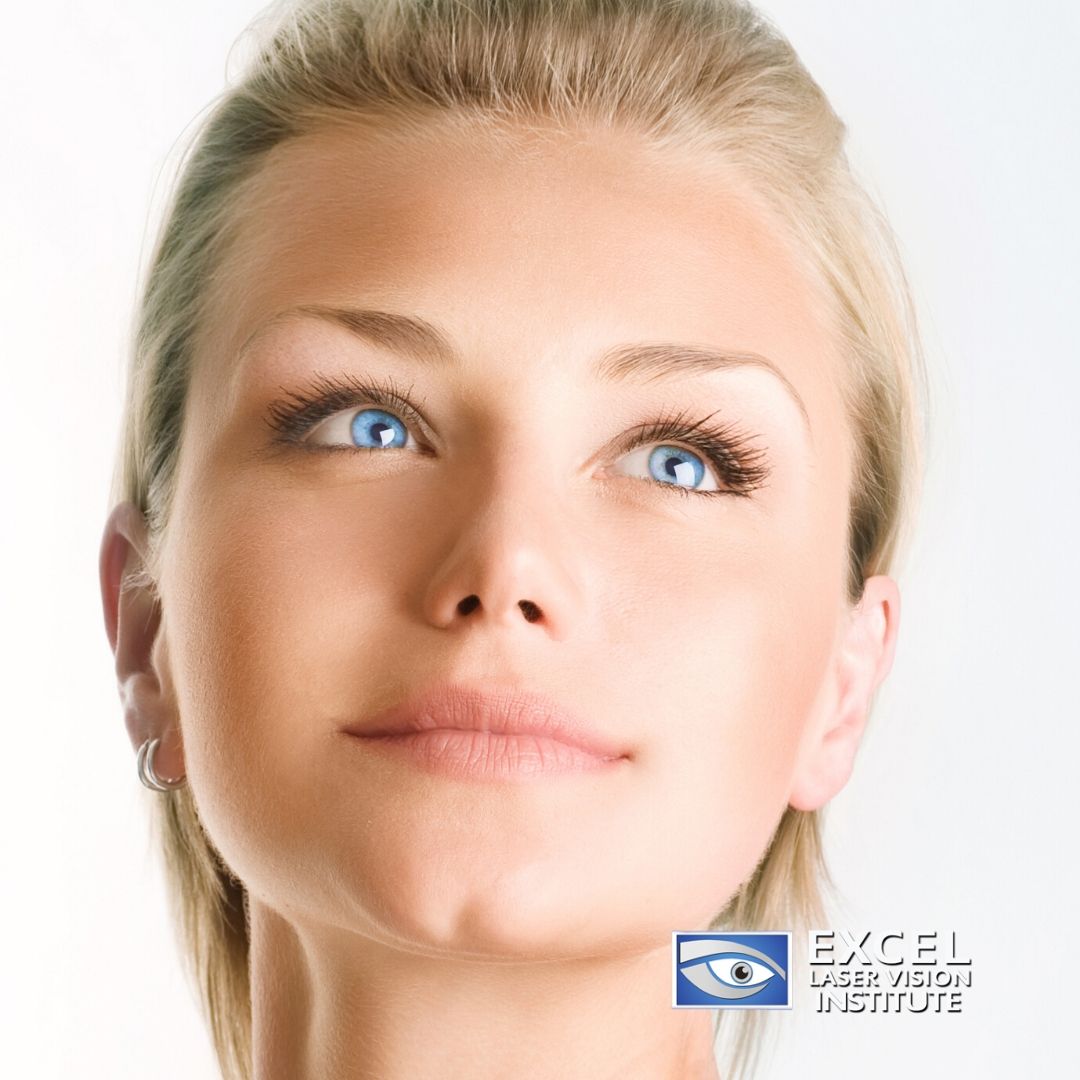
Do You Qualify For Laser Eye Surgery?
Many people know how expensive it can be to wear glasses. Fashionable lenses come and go, causing people to desire the latest trends that will match their wardrobe. Other people wear their frames out from regular use, leaving them desperate for new frames every year. Some people even start to lose their glasses, which induces them to buy a new pair every now and then. The LASIK surgeon in Orange County understands all the hassles and extra costs that make people consider other vision correction options that are available to them.
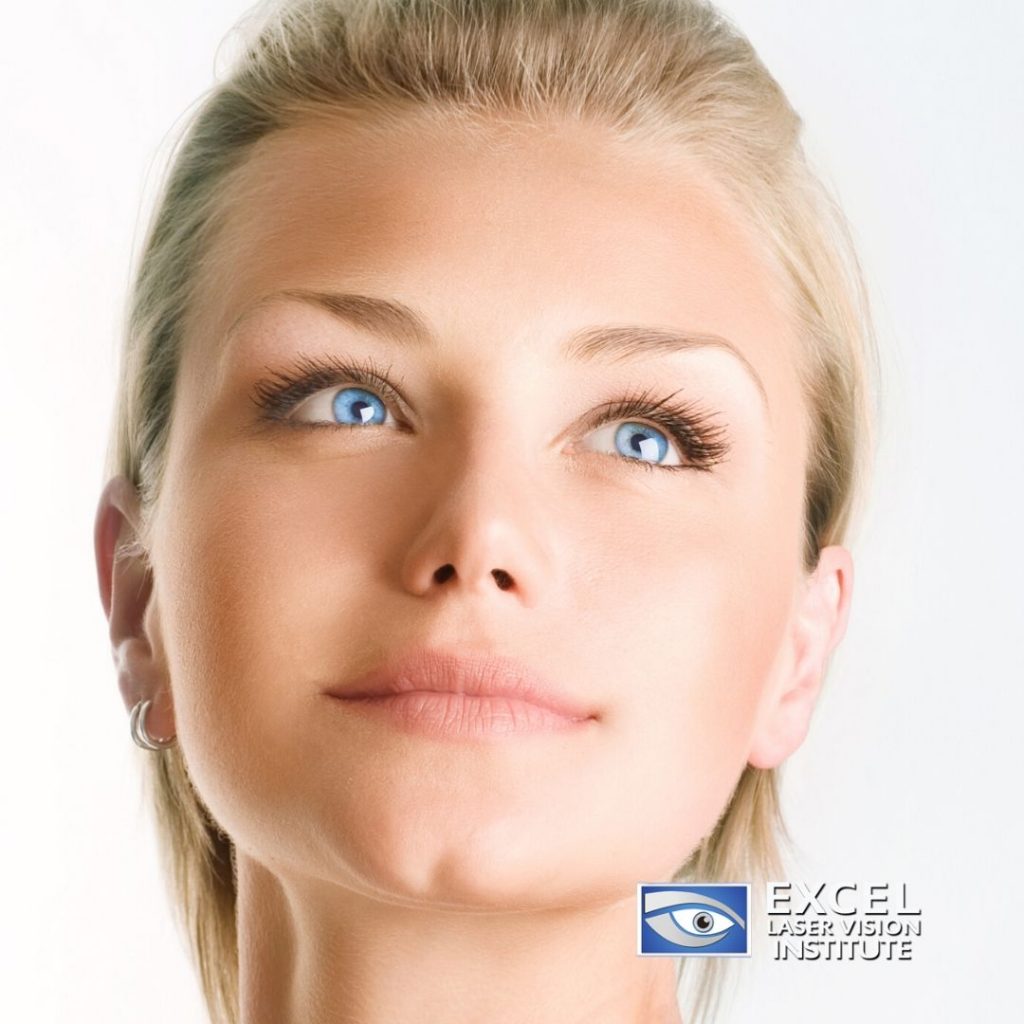
Some LASIK Orange County patients will ditch their specs completely and try less conspicuous eye correction methods such as contact lenses. However, as the LASIK surgeon Orange County explains, these are not designed to be a permanent eye correction solution and could even worsen issues when they are worn for too long or too regularly.
Do I Qualify For LASIK?
Before you spend good money on a pair of new eyeglasses or contacts, it is a good idea to weigh your available options. The LASIK surgeon Orange County says that the best way to know whether you are a good candidate for LASIK is to have a thorough examination by a board-certified ophthalmologist, such as Dr. Ferzaad Moosa, who specializes in corneal laser refractive surgery. A highly trained eye surgeon like Dr. Moosa can let you know if your prescription is treatable.
Nevertheless, your prescription is just one aspect of qualifying for LASIK. There are many other points of criteria that a patient has to meet to get the go-ahead from their eye doctor.
Listed below are the five factors that are essential to becoming a qualified candidate for LASIK surgery.
Is Your Prescription Within A Treatable Range?
The first thing your eye doctor will want to know is the prescription of your glasses since it is one of the best indicators to see if someone is suitable for a LASIK procedure. An individual’s prescription sometimes referred to as “refractive error,” is measured in diopters. Eye doctors use a diopter as a metric unit to indicate the strength of the lens that is required to correct a person’s vision. In fact, on your prescription card, you will see numbers that are in diopters. When there is a minus next to the numbers, it signifies near-sightedness and the plus sign represents far-sightedness.
Normally, eye surgeons can use the most state-of-the-art lasers and screening tools to treat up to +6.00 of farsightedness or hyperopia, up to -12.00 of near-sightedness, and up to 6 diopters of astigmatism. However, these exact numbers depend on the clinic, the technology, the expertise, and the type of treatment they have available.
Is Your Prescription Stable And Are Your Eyes Healthy?
You will know that you have a stable prescription when the numbers on your prescription card remain the same for at least two uninterrupted years. This is one of the reasons that, even though LASIK is approved for anyone who is 18 years or older, many eye doctors advise their patients to wait to have LASIK until they are in their mid-twenties.
When you are around this age, you have reached “ocular maturity” which means that a person’s prescription is not likely to change for a while. However, age is not the only factor that plays a role in having a stable prescription. The other circumstances that may affect a person’s prescription are general health, medication use, and pregnancy. Fortunately, many of these circumstances are temporary and won’t completely disqualify a person from receiving treatment.
What Is the Shape And Thickness Of Your Corneas?
LASIK is very different from eyeglasses and contact lenses since it is a permanent vision correction method that works by reshaping the cornea. The eye’s cornea is the transparent dome-like surface that helps the eye to focus light to create an image on the retina.
If your cornea is too thin or misshapen, it may cause issues with your vision. Typically, a LASIK evaluation at Excel laser Vision Insitute can help to evaluate the thickness and shape of the cornea, and whether it is safe to go ahead with the treatment.
What Is The Size Of Your Pupil?
During your LASIK consultation, your eye surgeon will most likely want to know the size of your pupil. If you have naturally large pupils, for example, you might have a higher risk of experiencing side effects following LASIK surgery, such as glare or halos at night. However, this cannot necessarily be determined by just looking at your pupils in the mirror so you should still seek the advice of a LASIK surgeon. Not everybody with large pupils is excluded from having LASIK, especially at clinics with advanced technology.
Do You Have Any Eye Conditions?
Existing conditions such as dry eye can sometimes worsen with LASIK surgery and should be considered before going ahead with the procedure. LASIK evaluations will check that you are able to look continually at a fixed spot or object for at least a minute. This will enable the eye surgeon to perform LASIK correctly.
If you have certain eye conditions such as glaucoma or cataracts, as well as any other type of eye infection or injury, this can interfere with LASIK surgery. Communicate these conditions with your eye surgeon so that he or she can carefully consider them before going ahead with your eye surgery.
There are also many other procedures besides LASIK that can be used to fix common vision problems. A well-trained eye refractive surgeon such as Dr. Ferzaad Moosa at the Excel Laser Vision Institute can help you decide on the best option for your vision goals. If you have any more questions about LASIK eye correction procedures, give the Excel Laser Vision Institute a call at + (818) 907-8606 to arrange an appointment today.
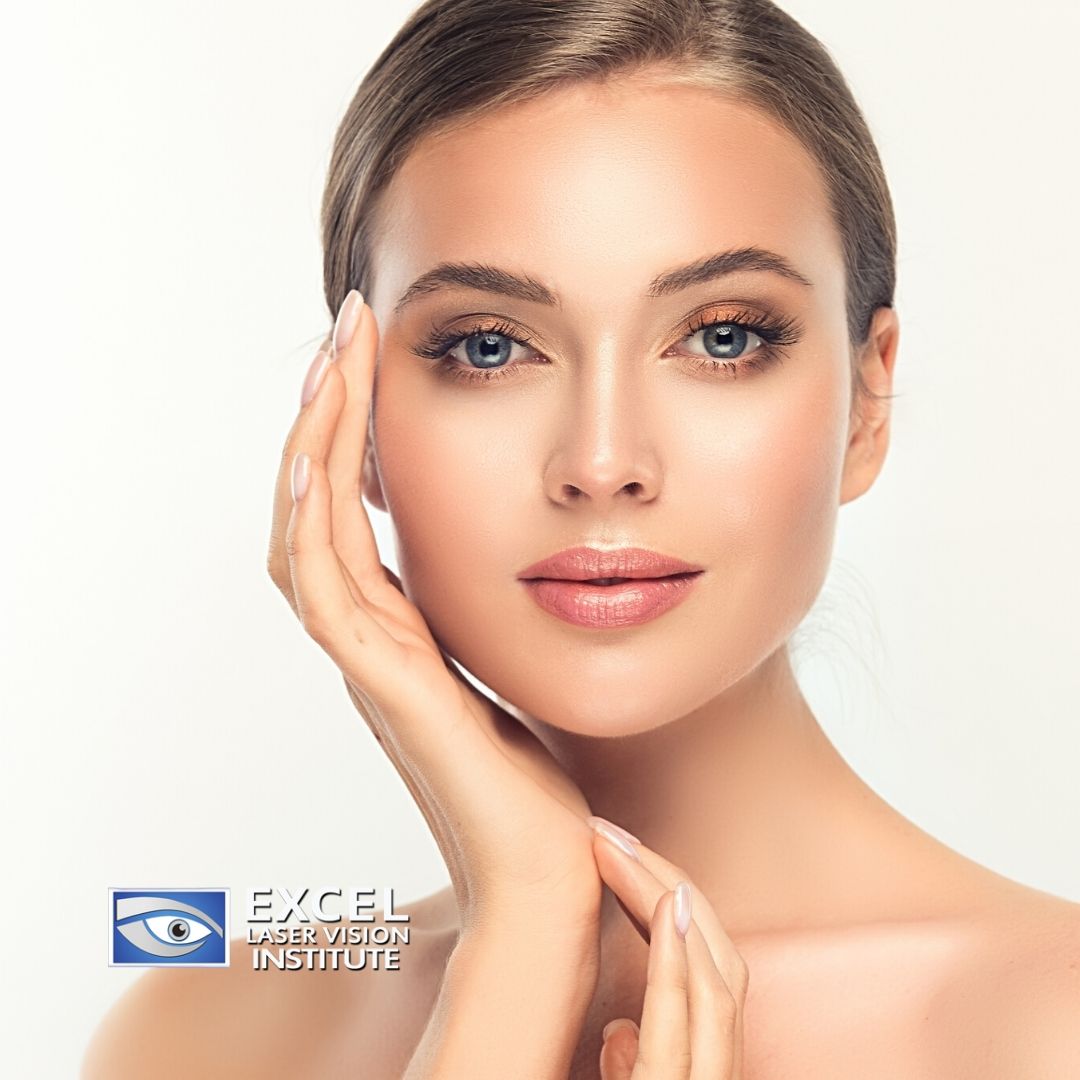
How LASIK Eye Surgery Can Help With Double Vision
Double vision, sometimes referred to by its medical term “diplopia”, can occur due to several reasons. The LASIK surgeon in Orange County says that it can sometimes be difficult to find the exact cause of a patient’s double vision. A few potential causes for double vision that the LASIK Orange County clinic like Excel Laser Vision Institute has come across are diabetes, weak eye muscles, an invisible bacterium in the eyes, a pinched nerve in the eye resulting from an injury, Graves’ Disease, a childhood squint, alcohol, and digital vision syndrome.
What Is Double Vision?
Double vision or diplopia is a condition in which a person sees images and text in double formation. Dr. Ferzaad Moosa, a LASIK surgeon in Orange County explains that the person usually sees the images or text overlap with one another. They can also look separate, to some extent, which makes it seem as if there are two objects when there is only one in reality.
Needless to say, double vision is a very irritating and troublesome condition since it makes it challenging to focus clearly.
Can LASIK Eye Surgery Help Double Vision?
A frequent question that people will ask the LASIK surgeon in Orange County is if LASIK eye surgery can help to alleviate a person’s double vision condition. There are many double vision corrective surgery options. So, before someone undergoes a surgery, the initial and most important step is to investigate the underlying causes of the double vision.
Even though double vision affects a person’s ability to see clearly, it normally isn’t treatable with LASIK. Normally, laser eye surgery is used to improve a person’s visual acuity by operating on refractive errors such as myopia, hyperopia, and astigmatism.
What Are The Causes Of Double Vision?
As mentioned above, double vision can be caused due to various underlying conditions and issues. Some of the more common ones include the following:
Muscle and Nerve Disorders: Occasionally, a person may be suffering a muscle and/or nerve disorder in the eye that can result in double vision because of misalignment. There are various ways to treat this condition, and sometimes surgery may be required for realignment.
Astigmatism: People who suffer from astigmatism might experience double vision. This could be because of abnormalities in the lens of the cornea as a result of not being shaped correctly. Laser eye surgery could, in this case, treat the imperfections in the eye and reconstruct the shape to fix double vision.
Medical Conditions: There are many medical conditions that could, if they are not managed appropriately, result in diplopia. These include, and are not limited to, multiple sclerosis, diabetes, stroke, brain tumor, and aneurysm. When doctors are able to treat these specific medical conditions, it could help to resolve a person’s issues with double vision.
Cataracts: When cataracts begin to develop in the eye, the lens becomes cloudy. The refractive angle of the eye can be obstructed in such a way that it results in double vision. A few people may notice that they only have diplopia in one eye, when their cataracts are developing at various intervals. Unfortunately, there are cases of people who have experienced double vision in both eyes if their cataracts are developing at the same rate of time.
Eye Infections: If you have pink eye (conjunctivitis) or some other form of eye infection, you may be experiencing double vision. In this case, your eye doctor would not likely recommend eye surgery. Instead, he or she will prescribe eye drops to eliminate the infection.
Eye Injuries: If you have injured your eye from sports, an accident, or any other reason, you may see double vision for a brief period of time afterward. The best thing you can do is to seek medical treatment from a qualified eye doctor to make sure that your retina has not become detached. If it has, then you will probably need retinal reattachment surgery.
As mentioned above, getting down to the nuts and bolts of double vision is necessary to figure out the best treatment. In cases where the condition is a result of astigmatism or cataracts, then visiting a well-trained laser eye surgeon such as Dr. Ferzaad Moosa would be the next best step. This eye surgeon will help you decide which procedure would be best for you to achieve better eye health and vision.
What Is The Age Limit For LASIK For Double Vision?
When you are discussing your double vision with your eye doctor, he or she will let you know that LASIK for double vision issues is only applicable if you have astigmatism and are between 19 and 40 years of age.
After people pass the age of 40, their eyes slowly begin to alter and affect vision a lot more than before. In some instances, where double vision is because of cataracts, LASIK would not be the most suitable form of treatment.
Your eye surgeon would, instead, have to replace the cloudy natural lenses of the eyes with Intraocular Lenses (IOLs). IOLs are a form of implantable contact lenses that help to bring back a person’s vision after the cataracts are removed and will also eventually solve the issue with double vision.
Make Sure You Need LASIK
If you have started to experience double vision, you should begin by removing all the potential causes from the scenario. This means reducing the amount of alcohol you consume and minimizing digital screen time.
If the problem does not go away, get in touch with your doctor to investigate if there is an underlying cause that is instigating your double vision.
In a majority of cases, double vision can be treated with simple home remedies. For example, if you are suffering from invisible bacteria, you should let your eyes rest, use a hot compress, and administer lubricating eye drops.
In more exceptional cases, surgical correction may be required. For instance, if you are suffering from a pinched nerve that is a result of an injury, a surgical procedure can be performed to repair the nerve. This kind of procedure does not involve the cornea, which means that laser eye surgery is unnecessary.
If you want further information about various refractive surgeries such as LASIK to improve your eyesight, give the Excel Laser Vision Institute a call at + (818) 907-8606. Our expert team of highly trained refractive surgeons can guide you step-by-step to the laser eye surgery that best suits you!
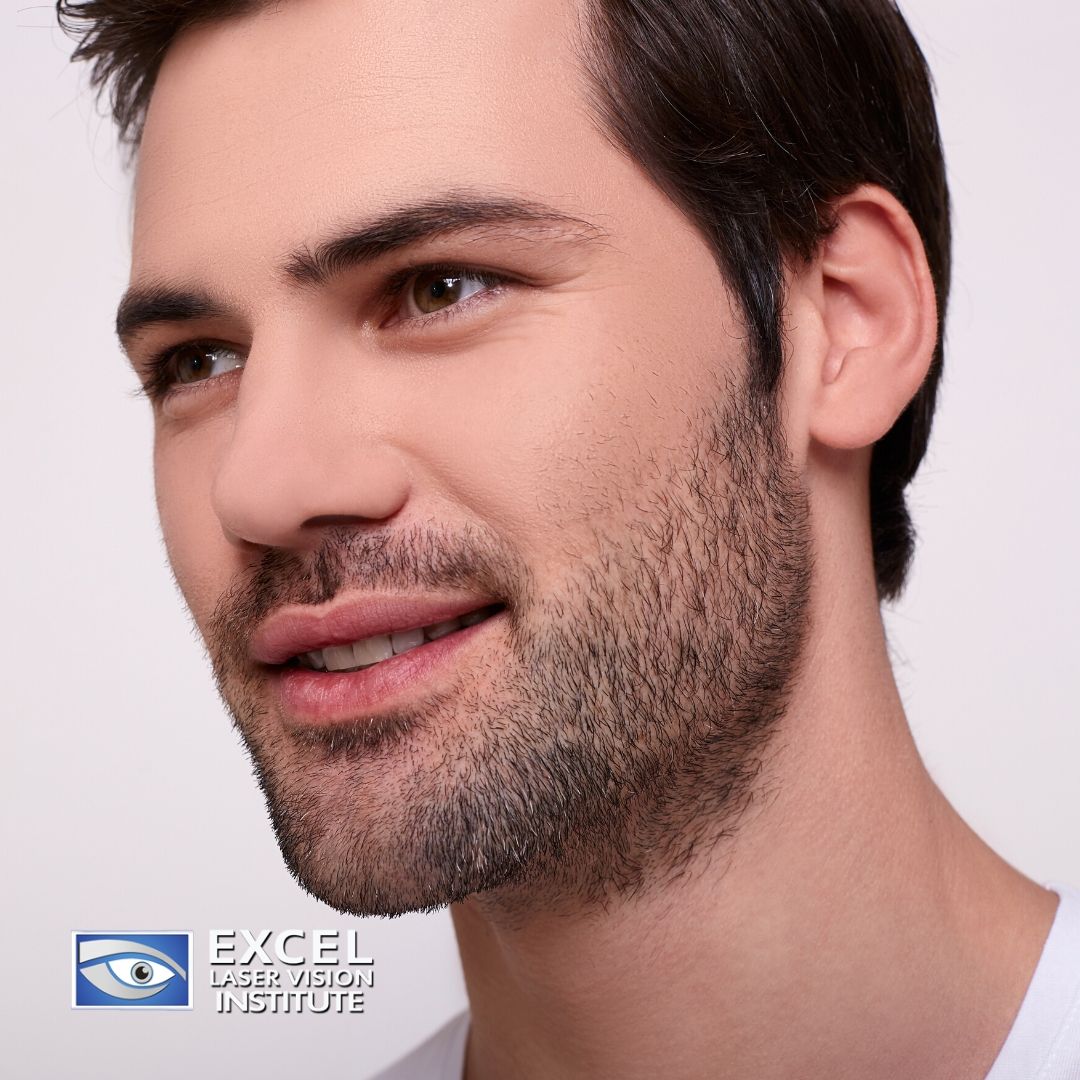
How Much Time and Money Can LASIK Save You?
Some people hesitate to consider LASIK in Los Angeles for their eye surgery procedure because of costs. However, when you look into the advantages of LASIK, you will learn that the procedure is an investment that will actually save you money over time.
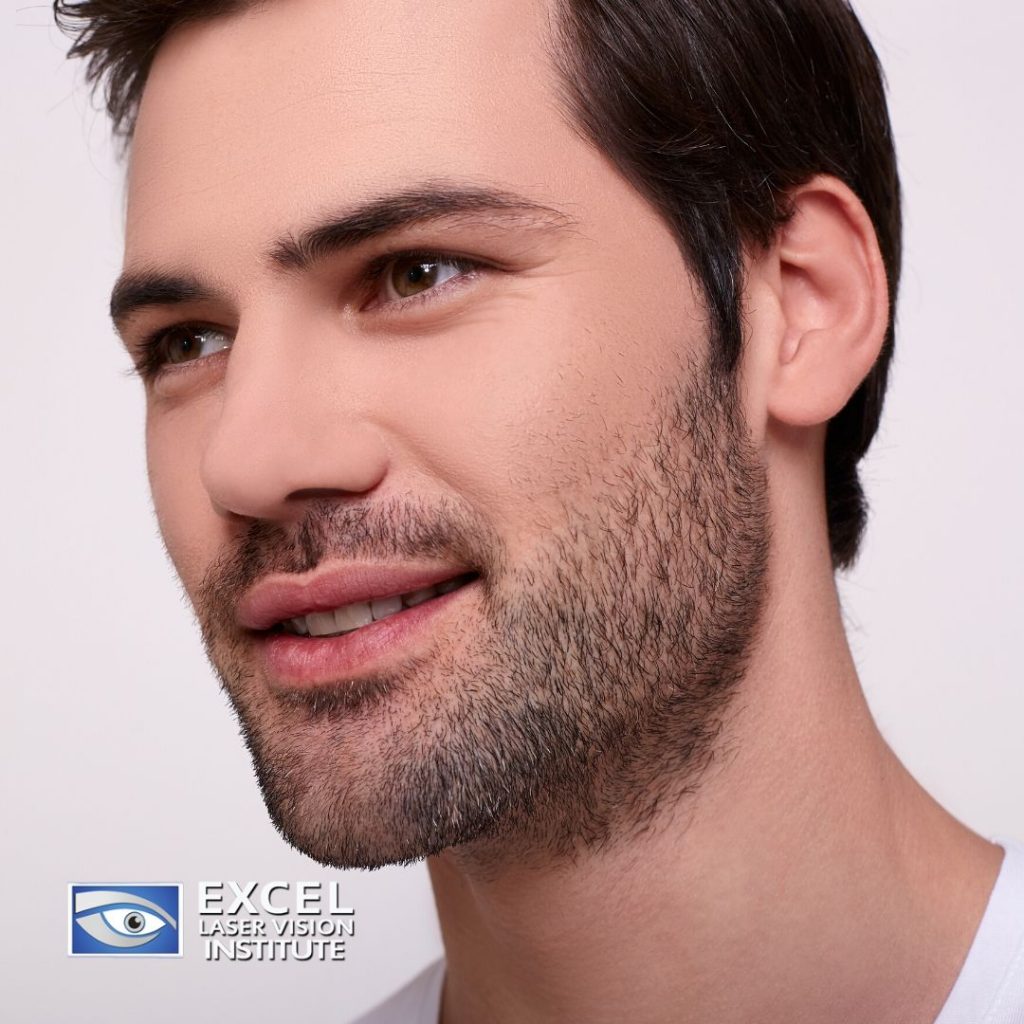
LASIK surgery costs around $2,000 to $4,500 for both eyes. When you analyze the cost compared to the daily hassle and expense of wearing glasses or contacts, you might be shocked to discover that LASIK is the better option.
No More Glasses Or Contact Lenses
If you have been wearing glasses or contact lenses for a while, you are probably aware that prescription eyewear tends to drain your bank account rapidly. The average cost of disposable contacts ranges from $30 to $70 per box, depending on the brand you go for. On the other hand, prescription glasses can start at $200 a pair and that number can increase when you consider designer frames and additional lens features.
The LASIK eye center in Los Angeles explains that prescription eyeglasses and sunglasses, contact lenses, accessories, doctor visits, and other expenses could tally up to four figures in a matter of just a few years. Based on data from the American Academy of Ophthalmology, Americans spend an average of $15 billion a year on eyewear.
A person’s choice of eyewear is dependent on their health or vision insurance since it may only be partially covered or perhaps not covered at all. LASIK Los Angeles patients no longer have to be concerned about ordering and paying for expensive contacts, working with insurance limits on eyewear, or replacing glasses.
More often than not, patients find that saving time after LASIK is just as important as saving money. Even though it may seem like something very insignificant, the average time that people spend cleaning and applying their contact lenses does accumulate.
While it only takes a few seconds to put on and take off a pair of glasses, the number of minutes a person can spend cleaning the smudges from their lenses or looking for misplaced glasses or adjusting their crooked frame can definitely add up. All of these incidental moments could be spent on more productive, fun, or interesting activities.
Advantages Of A Health Savings Account
When you put money aside for a LASIK Los Angeles procedure in health savings account or HSA, you could end up saving as much as 30 percent on the total procedure cost in contrast to someone paying out of pocket or with credit. A good majority of LASIK clinics accept HSA dollars as a method of payment, so you can expect a massive tax benefit by planning ahead.
Keep in mind that some employers provide HSA contribution matches, which could also outweigh the cost of your LASIK procedure.
Furthermore, the long-term advantages of LASIK play a huge role here as well. When you pay for the procedure, your vision-related expenses are significantly reduced or perhaps even eliminated. Your HSA dollars that were previously used for eyeglasses and contacts can now go toward other medical expenses.
It is critical to be well informed about the regulations of your specific HSA before booking your LASIK procedure. Also, you can have a chat with your company’s human resources manager for individual information.
Vision Plan Discounts
A majority of LASIK clinics accept vision plans, which can give you even more discounts on the cost of laser vision correction. When you consider the combination of these discounts with a Health Savings Account, you might find that the remaining cost is a fraction of the money that you currently spend on contact lenses and prescription eyeglasses.
Each vision plan provides various advantages and each LASIK provider has guidelines for merging discounts, so do a little research before coming to a final decision. Do a simple cost analysis to help decide if and how LASIK is a better investment for your vision requirements.
Cheap Laser Eye Surgery Can Cost More
While you have been doing your research about LASIK surgery, you may have come across “too good to be true” laser eye surgery prices. Beware of offices that have too good of a deal. Successful laser eye surgery, just like any efficient procedure, isn’t going to be cheap.
When a LASIK procedure is done properly by a highly skilled surgeon such as Harvard-trained Dr. Ferzaad Moosa, who uses the most state-of-the-art technology and exceptional care, it should cost at least $4,000 per patient.
If you come across any eye laser procedure that is less than $1,000, you should seriously question the legitimacy of the office and approach with caution. If a LASIK clinic is offering treatment at this low of a price, it could signify that they are cutting corners somewhere, which could lead to more potential risks for their patients.
Some ways that clinics can afford to reduce their prices is by scheduling as many treatments as possible in one day. This can result in overworking their eye surgeons and reducing the amount of time spent on each patient. Another method of reducing costs is by using outdated technology or skipping essential parts of the process.
Some clinics will claim to have one direct cost that covers everything a patient requires. These specific providers may begin by charging for everything (from pre-surgery tests to post-surgery aftercare) and later on tacking on a long list of additional expenses that were not outlined from the beginning.
The best thing that a future LASIK patient can do is stay well-informed. Laser eye surgery is a significant expense that one must budget for responsibly. However, this cost is often worth the freedom and convenience that better vision can provide. Some clinics even offer 0% finance for about 24 months, which allows patients to more readily make their required payments.
LASIK eye surgery may be one of the greatest investments you make to improve your daily life.
If you want more information about LASIK surgery, give the Excel Laser Vision Institute a call at (818) 907-8606, or fill out our contact form today!

When To Have Cataract Surgery
According to statistics from the American Academy of Ophthalmology, about 25.7 million Americans, who are over the age of 40, have cataracts. This number is expected to increase to 45.6 million by 2050. Although cataract surgeons in Los Angeles inform us that the only way to remove cataracts is surgery, the right time to have surgery depends on the patient.

When Should I Get Cataract Surgery?
When cataracts begin to grow, this can lead to intense symptoms for the person who is affected. They will probably experience dimmed, blurred, or yellowed vision. Also, the individual may have double vision when they look at things through the eye affected by the cataract. These issues can make it difficult to read, work on a computer, and do any activities that require clear eyesight.
Furthermore, the person with cataracts may have poor night vision and find it a challenge to drive when it is dark. Normally, those with advanced cataracts fail the vision factor of a driver’s test.
Doctors at the refractive and LASIK eye center in Los Angeles like Excel Laser Vision Institute say that cataracts can make a person more sensitive to glare emitted from the sun. Additionally, people with cataracts may see a halo around bright lights, which prevents them from going outdoors. Also, it makes it a challenge to play certain sports, such as golf or skiing.
If you are experiencing any of these symptoms, cataract surgery could help. Eye surgeons at the refractive and LASIK Los Angeles center such as Excel Laser Vision Institute have some advice for individuals who have been diagnosed with cataracts and are considering whether or not to have the surgery.
What Are Cataracts?
Cataracts happen due to the body’s natural aging process. Just because you have been diagnosed with cataracts does not always mean that you must have the surgery right away. In the early stages of cataracts, it may not greatly affect your vision and small changes may be improved with prescription glasses. However, as cataracts continue to develop over time, they may cause vision loss that can interfere with daily life.
Although the idea of having cataract surgery may be daunting for some people, the procedure is the most common elective surgery between Medicare beneficiaries in the United States. Numerous studies have shown its link to a better quality of life, decreased risk of falling, and fewer car crashes. Moreover, one study found that individuals who had cataract surgery had a 40 percent lower long-term mortality risk than those who did not.
Eye surgeons at the Refractive and LASIK Los Angeles center i.e., Excel Laser Vision Institute have put together a list of four questions that people should ask themselves to help determine if they are ready for cataract surgery:
Are Your Cataracts Affecting Your Daily Or Occupational Activities?
The symptoms of cataracts can range from dim, blurry, or yellowed vision to even double vision in one eye. Since cataracts cause a lack of contrast and clarity, it can be hard for people who need clear vision for work, driving, or who enjoy hobbies such as cooking, reading or sewing.
Are Your Cataracts Impacting Your Abilities To Drive Safely At Night?
Cataracts can result in halos around lights and problems seeing in low-light settings, affecting the ability to safely drive at night. If your cataracts are advanced enough, it can cause enough vision loss to fail the vision test that is needed for a driver’s license.
Are Cataracts Interfering With Outdoor Activities You Enjoy?
You need to ask yourself whether your cataracts are interfering with the outdoor activities you like to do. Why? Because cataracts can increase a person’s sensitivity to glare, which can be particularly burdensome for individuals who enjoy skiing, surfing, and many other outdoor activities. Also, cataracts can cause visual differences from one eye compared to the other, which can affect the distance vision that golfers usually require.
Are There Other Ways To Manage Cataracts?
If you decided to put off your cataract surgery, you can make the most of your vision with a few resources; for instance, incorporating brighter lighting and contrasting colors in the home. While you are outside, polarized sunglasses and a wide-brimmed hat can reduce glare, whereas magnifying lenses can make reading less difficult.
In general, if cataracts aren’t interfering with your life, you can most likely wait and have surgery when it really begins to annoy you. However, for those individuals who are feeling hindered by their blurry or dulled vision, a cataract procedure can make a great advantageous impact.
An eye surgeon will advise a patient to get cataract surgery when the results are expected to improve vision, unless the cataracts complicate treatments for other eye diseases. Individuals who are thinking about cataract surgery should talk to their eye doctor about how cataracts are affecting their daily lives.
What Does Cataracts Surgery in Los Angeles Involve?
Normally, the surgery is performed on an outpatient basis under a topical local anesthesia. Besides numbing the eye’s surface, the eye surgeon can also provide the patient with intravenous sedation or oral anti-anxiety medication. Most patients remain awake during the procedure.
Understandably, this sounds intimidating for a part of your body that is as sensitive as your eyes; however, the comforting measures that are taken have proven to be extremely effective. Patients usually say that they see rainbows or prisms during the procedure, but these images are temporary. Typically, patients do not experience any pain during or after the cataract procedure. A few patients experience a scratchy feeling afterward that can be easily managed with over the counter painkillers.
The surgery has a very short duration of 15 minutes, there is no blood loss and there is a fast recovery period. Many people return to work and their daily routines in a day or two.
The eye doctor implants an artificial lens that replaces the focusing power that natural lenses lose as we age. They are fixed in the eye, so they are good for a lifetime. Various types of replacement lenses are available for implantation, so it is necessary to discuss options with your eye surgeon and decide which lens is best for you.
Cataract surgery in Los Angeles can give you the visual freedom you need and improve your overall health. If you want further information about cataract surgery, give the Excel Laser Vision Institute a call at + (818) 907-8606 today.
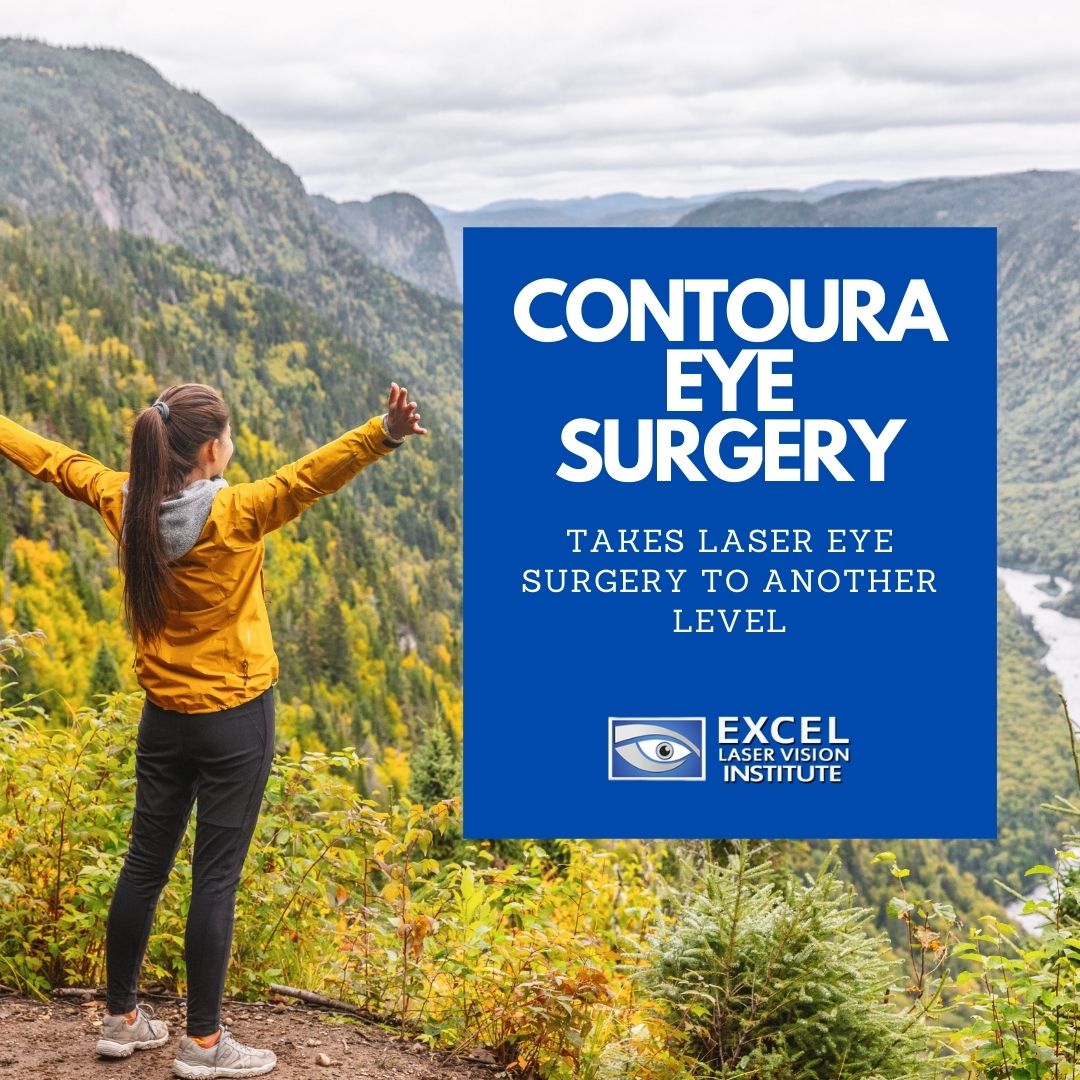
The Difference Between Contoura And LASIK
The LASIK surgeon in Orange County informs us that Lasik and Contoura are two eye surgery procedures that are believed to be excellent variants of laser vision correction. Eye doctors of LASIK in Orange County inform us that the way they choose between the two procedures is through a series of comprehensive eye examinations and discussions with the patient about their vision needs and expectations.

It is important to understand and critically evaluate both LASIK and contoura eye surgery before making a final decision.
What Is Contoura Eye Surgery?
Contoura Vision, which is also referred to as a type of topography-guided LASIK, is the most recent FDA approved evolution in cutting-edge LASIK technology. The LASIK surgeon in Orange County says that the benefits of this procedure appeal to many patients who are thinking about eye laser surgery.
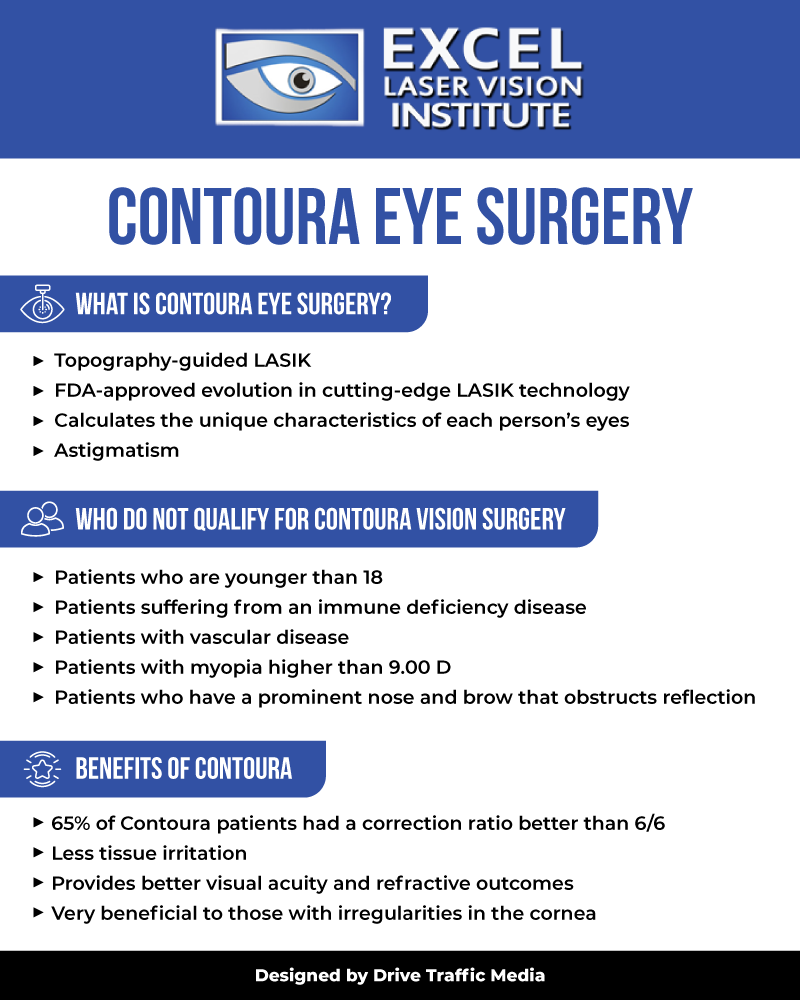
Contoura eye surgery in Los Angeles is very beneficial to patients who do not qualify for LASIK surgery because of irregularities in the cornea. This topography-guided LASIK treats both the shape of the patient’s eye and the surface texture of the cornea, whereas other LASIK treatments only correct the shape of the eye.
The Contoura technology provides eye surgeons with detailed data that calculates the unique characteristics of each person’s eyes. As a result of this, an individualized treatment plan is created using this information that surgeons can use to perform personalized LASIK procedures on each eye.
How Was Contoura Vision Developed?
Over the years, vision correction has moved in leaps and bounds to help those with poorer eyesight see clearly. For instance, eyeglasses were invented in the 13th century in Europe, and contact lenses were first produced in the late 1800s from hand blown glass in Switzerland.
As time moved on, innovations in correcting refractive errors became more sophisticated. For example, a Russian ophthalmologist developed radial keratotomy, which is a surgical procedure to treat short-sightedness.
During a radial keratotomy procedure, the surgeon creates an incision with a diamond knife from the center of the cornea to the periphery to change the cornea’s curvature. Nowadays, radial keratotomy is still used to treat specific forms of astigmatism.
The late 1980s saw the introduction of excimer lasers, which are used to reshape the contours of the eye. Back then, the technique was known as photorefractive keratectomy and was approved in the early 1990s by the U.S. FDA. Ever since then, PRK laser-assisted eye surgery has achieved more precise and long-lasting corrections to refractive errors.
LASIK, which is an acronym for laser-assisted in-situ keratomileuses, has refined the techniques of RK and PRK. During LASIK surgery, a small flap of the cornea is lifted to reshape the underlying corneal tissues. Afterward, the flap is placed back and left to heal without any need for stitches. LASIK surgery is the most common corrective refractive surgical procedure around the globe to correct astigmatism, near-sightedness, and far-sightedness.
Before the turn of the new millennium, doctors developed wavefront analysis, which maps the errors of a patient’s eye in its entirety. The data is programmed into the laser, which provides a customized procedure with more accurate results. Contoura Vision is based on the foundation of topography, providing a precise mapping of 22,000 points of the cornea. Traditional LASIK wave-front only maps around 200 points of the whole eye.
Are You A Candidate For Topography-Guided LASIK?
To find out whether you are a good candidate for Contoura Vision is contingent on a thorough consultation by an experienced LASIK surgeon in Orange County. He or she can best determine whether the procedure is right for you.
Normally, Topography-Guided LASIK is particularly helpful to patients with several vision issues such as myopia (nearsightedness), irregular corneas and/or astigmatism. Contoura uses personalized diagnostic technology to find and record imperfections in the curvature and optics of the cornea, then blends those measurements with the eyeglass prescription so that the eyes can focus better.
These are the standard guidelines for patients who do not qualify for Contoura vision surgery:
- Patients who are younger than 18
- Patients suffering from an immune deficiency disease
- Patients with vascular disease
- Patients with myopia higher than 9.00 D
- Patients who have a prominent nose and brow that obstructs reflection.
Your eye doctor will determine other criteria on a case-to-case basis.
What Is The Difference Between Contoura And LASIK Surgery?
Both procedures are advanced methods of eye laser surgery and are used to correct short-sightedness, long-sightedness, and astigmatism. However, they have some differences between them when it comes to the procedures themselves as well as their outcomes. Here are some of the ways that Contoura and LASIK vary from one another.
Although LASIK is well-renowned as a top-notch surgery to help patients eliminate the need for eyeglasses or contact lenses, the Contoura Vision procedure provides better visual acuity and refractive outcomes in many cases. Contoura Vision takes LASIK corrective surgery to a new level. Also, Contoura Vision utilizes a computer-guided topographic mapping technique that maps microscopic contours of the cornea. Keep in mind that the cornea is the clear front part of the eye.
Contoura Vision can treat irregularities in the curvature of the cornea as well as optics. Most of the time, the underlying cause of vision issues is this irregular curvature. The treatment focuses on the visual axis of the eye while other LASIK procedures only concentrate on the pupil.
When your eye surgeon performs Contoura Vision, the contours of the cornea produced by the computer analysis are programmed into a uniquely designed laser that is utilized for your vision correction. About 22,000 points of the cornea are mapped, which helps the surgeon create an individualized treatment plan, and eventually, the laser applies this treatment to the cornea. Due to the fact that each patient’s eyes are different, no two treatment plans are the same.
Once Contoura Vision surgery is complete, the irregularities of the cornea are smoothed, and optical quality becomes so flawless that light can penetrate the eye evenly. As a result of this, the patient has clear, sharp vision. The Contoura Vision technique does more than provide patients with a means of eye correction to eliminate their need for glasses or contacts. Many patients see more clearly after the treatment than they did when they wore corrective lenses. Also, there are fewer issues with glare and halos around lights. This makes it easier for patients to drive at night and do any other routine activities without the need for corrective lenses.
Contoura eye surgery delivers amazing results. About sixty-five percent of patients who received the treatment had a correction ratio better than 6/6. Moreover, this procedure lessens the amount of tissue irritation and thus leads to a faster recovery. Additionally, Contoura Vision can be used in some cases to treat people who have had LASIK surgery and were not satisfied with the results.
If you want more information about LASIK and Contoura eye surgery in Orange County and Los Angeles, do not hesitate to give Excel Laser Vision Institute a call at (818) 907-8606, or fill out our contact form today!
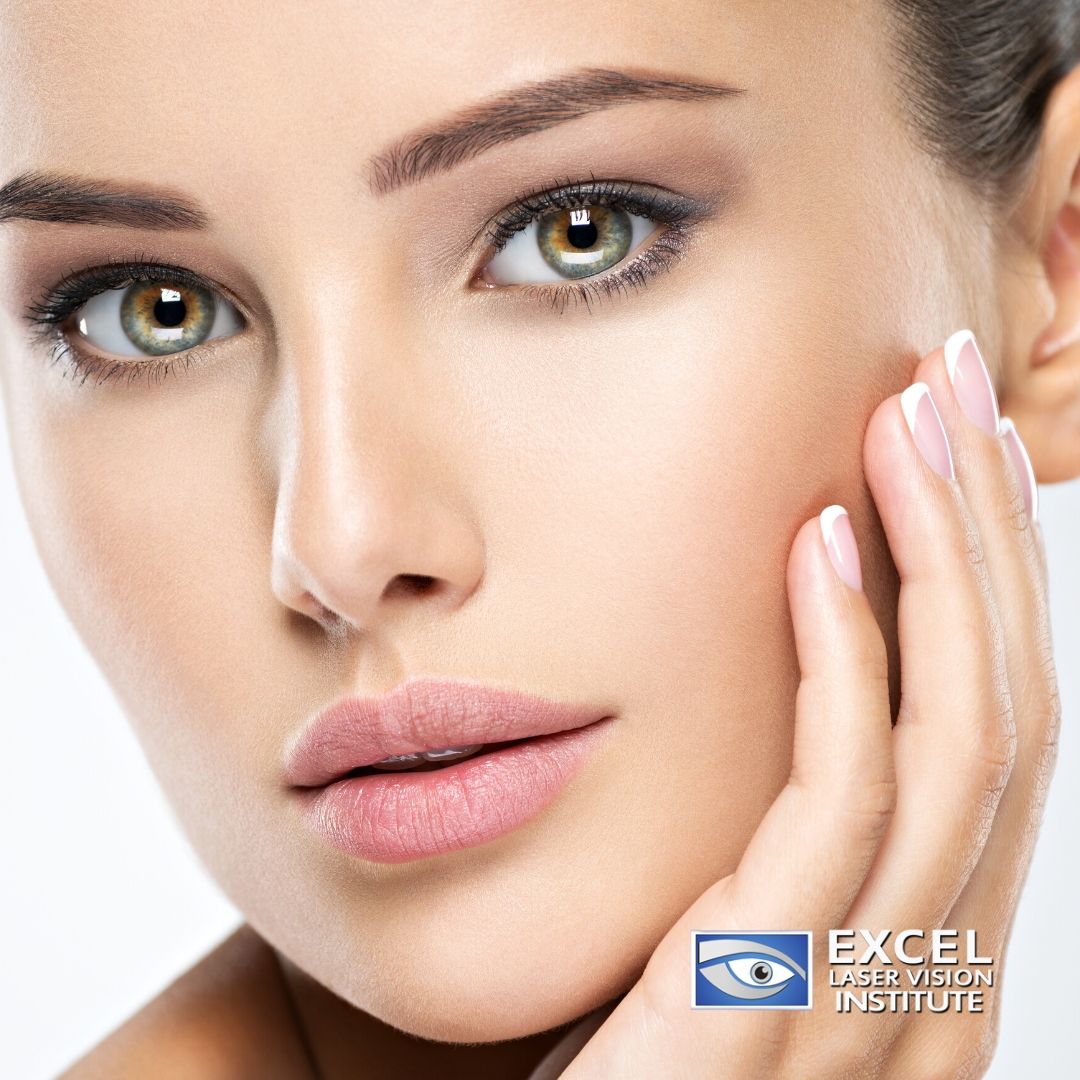
What Should You Know Before Undergoing LASIK
Everyday, people with refractive vision errors such as nearsightedness, farsightedness, or astigmatism get LASIK in Los Angeles for an outstanding solution that helps them restore their eyesight. The LASIK eye center in Los Angeles such as Excel Laser Vision Institute confirms that the procedure has been approved by the FDA for over 20 years. As a result of this innovative eye surgery, millions of people have enjoyed the advantages of LASIK.
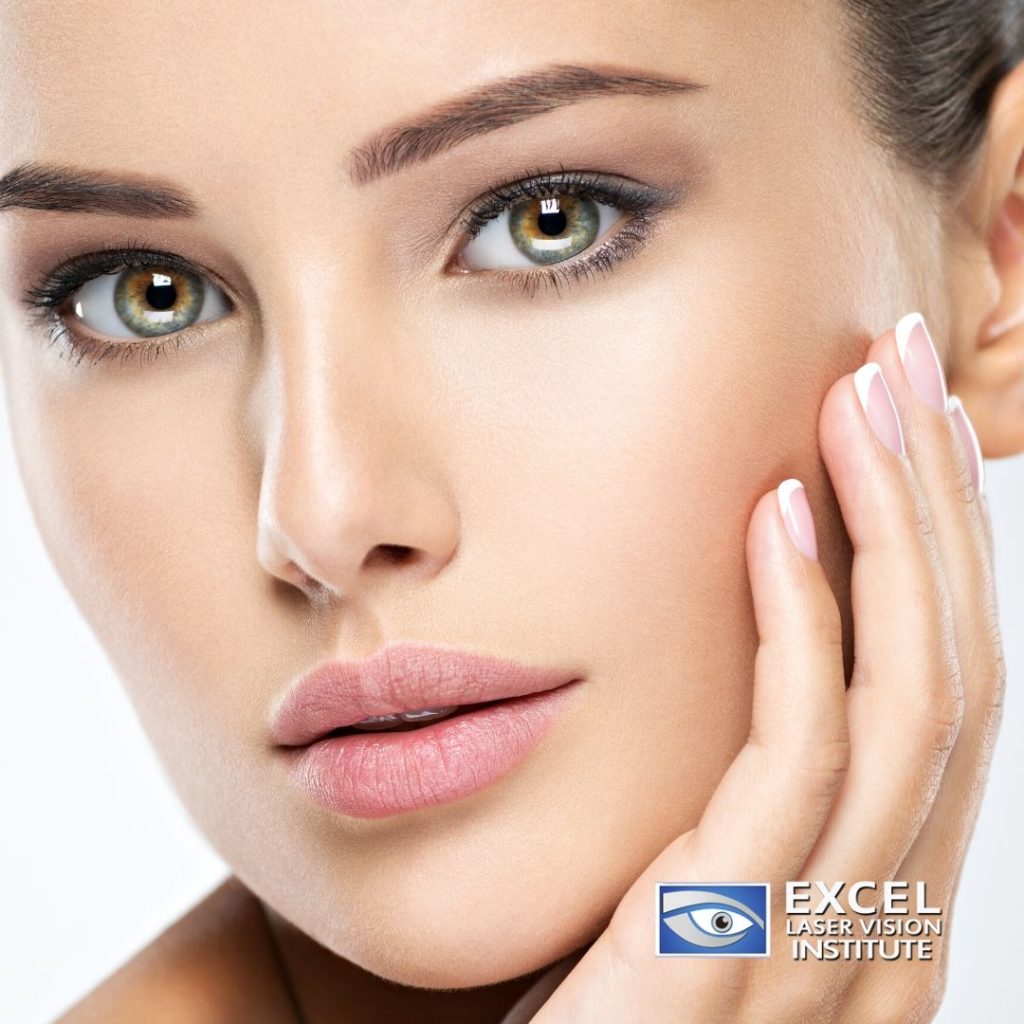
Based on data from the American Academy of Ophthalmology, about 700,000 LASIK procedures are carried out every year in the United States. Furthermore, the American Refractive Surgery Council has informed us that around 99% of LASIK patients achieve 20/40 vision or better and over 90% of patients achieve 20/20 vision or better. If you consider the number of patients who undergo LASIK, this is a remarkable success rate.
Undoubtedly, LASIK has generated positive results with almost no side effects and it has become very widespread in the process. However, a patient’s exact experience will depend on factors surrounding the doctor, the clinic, and the patient’s case. Before you book an appointment for LASIK in Los Angeles, and say goodbye to prescription eyeglasses and contacts for good, you should take into consideration the following important factors:
A Good Surgeon Is Important
You must find an eye surgeon that has ample skills and experience in LASIK surgery since this plays a role in achieving positive results. Also, you should understand that no two eyes are exactly the same. For that reason, your procedure has to be customized to tackle your specific vision problems. When you are with an excellent surgeon like Harvard-trained Dr. Ferzaad Moosa, who has performed thousands of procedures throughout his career, you can be sure that your unique vision correction goals will be met.
When you start to size up LASIK surgeons, be sure to think about the following questions:
- How many years has the surgeon been performing LASIK?
- How many LASIK procedures has the surgeon performed?
- What pre-operative and post-operative care is available for this procedure, and will there be an extra fee or is it included in the surgery cost?
- Is there an additional charge for any future enhancement procedures required?
- What has been the surgeon’s track record on patients with similar refractive errors?
- Will the surgeon be using the newest and best laser technology for the procedure?
Asking your surgeon about the equipment that they will be using for your procedure is crucial. It is best to work with a LASIK surgeon that uses the most advanced technology since it will refine the precision of your results, lower your risk of complications, and reduce your chances of requiring an enhancement procedure.
Find Out If You Are A Good LASIK Candidate
You should know that not everybody is a good LASIK candidate. Some determinants that may prevent you from a successful LASIK procedure include:
- Corneas that are too thin to sustain the creation of a LASIK flap
- Corneas that are severely misshapen
- Harsh vision problems (prescription stronger than +6.00 diopters for hyperopia, stronger than -12.00 diopters for myopia, and more than 6 diopters of astigmatism)
- A serious case of chronic dry eye syndrome
- Corneal scarring and other problems that affect the health of your eyes
Make Sure To Follow All Pre-Surgery Instructions To A ‘T’
There is a good reason why your doctor gives you pre-surgery instructions. You should follow them carefully, so you set yourself up for a successful procedure. If you choose to ignore them, you may increase your possibilities of complications.
The two most critical instructions you will get from your LASIK Los Angeles surgeon are:
- Stop wearing soft contact lenses for at least two weeks before your scheduled LASIK surgery. If you wear hard or gas permeable lenses, you should discontinue use at least three weeks before surgery.
- Do not wear makeup before LASIK
The first directive is the most crucial since wearing contact lenses changes the shape of your cornea. To allow the laser to properly adjust to the curvature of a person’s cornea, you will have to give your eyes time to go back to their original shape before LASIK is carried out. This takes several weeks to happen. Although the standard procedures listed above are only minimum requirements, you would benefit from giving your eyes even more of a break from contacts before your surgery day.
You should avoid wearing makeup before LASIK since this can help reduce the risk of developing an infection after the surgery has been performed. An infection can gravely impact a patient’s healing, comfort, and results. Not wearing makeup for a few days will be worthwhile in the end when you have a smoother recovery process.
You May Experience Mild Side Effects In The Recovery Process
Even though serious complications are very uncommon, it is typical to experience minor side effects during the healing process. These include the following symptoms:
- Halos and glare around bright lights
- Light sensitivity
- Dry eyes
- Blurry vision and changes in the quality of vision
- Tearing
These effects, if you experience them, will fade as your eyes heal and are usually nothing to be worried about. Nevertheless, you should always let your surgeon know about any symptoms so that he or she can monitor them throughout your recovery process.
LASIK Results
LASIK can, and often does, eliminate a person’s need for glasses and contact lenses. However, this is not a 100% guarantee. About 99% of patients will receive 20/40 vision or better after LASIK. This is usually the level of vision needed to operate a vehicle without corrective lenses. Therefore, in many cases, you won’t need your glasses after the procedure.
On the other hand, there are limitations to what can be achieved with LASIK. Patients with a severe prescription may experience great improvement in their vision after LASIK, but might still require glasses to have sharper vision.
During your consultation, you should discuss with your surgeon what type of results you can reasonably expect to achieve from your procedure.
If you want more information about LASIK surgery, do not hesitate to give Excel Laser Vision Institute a call at (818) 907-8606, or fill out our contact form today!
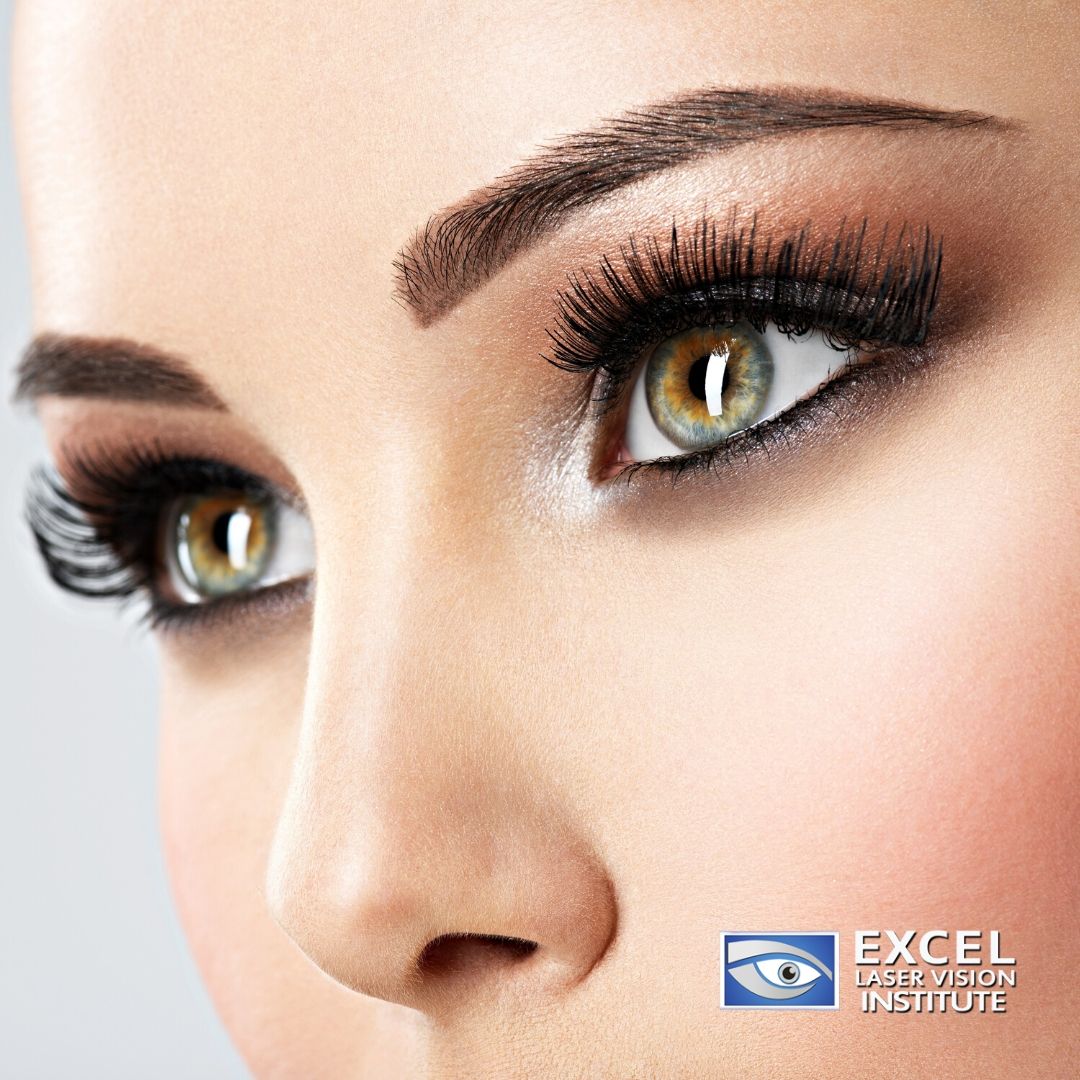
Contoura™ Explained
The LASIK surgeon in Orange County reveals that the arrival of Contoura™ Vision Topography-Guided Laser Vision Correction is finally here, the most state-of-the-art laser platform that is currently available in the United States.
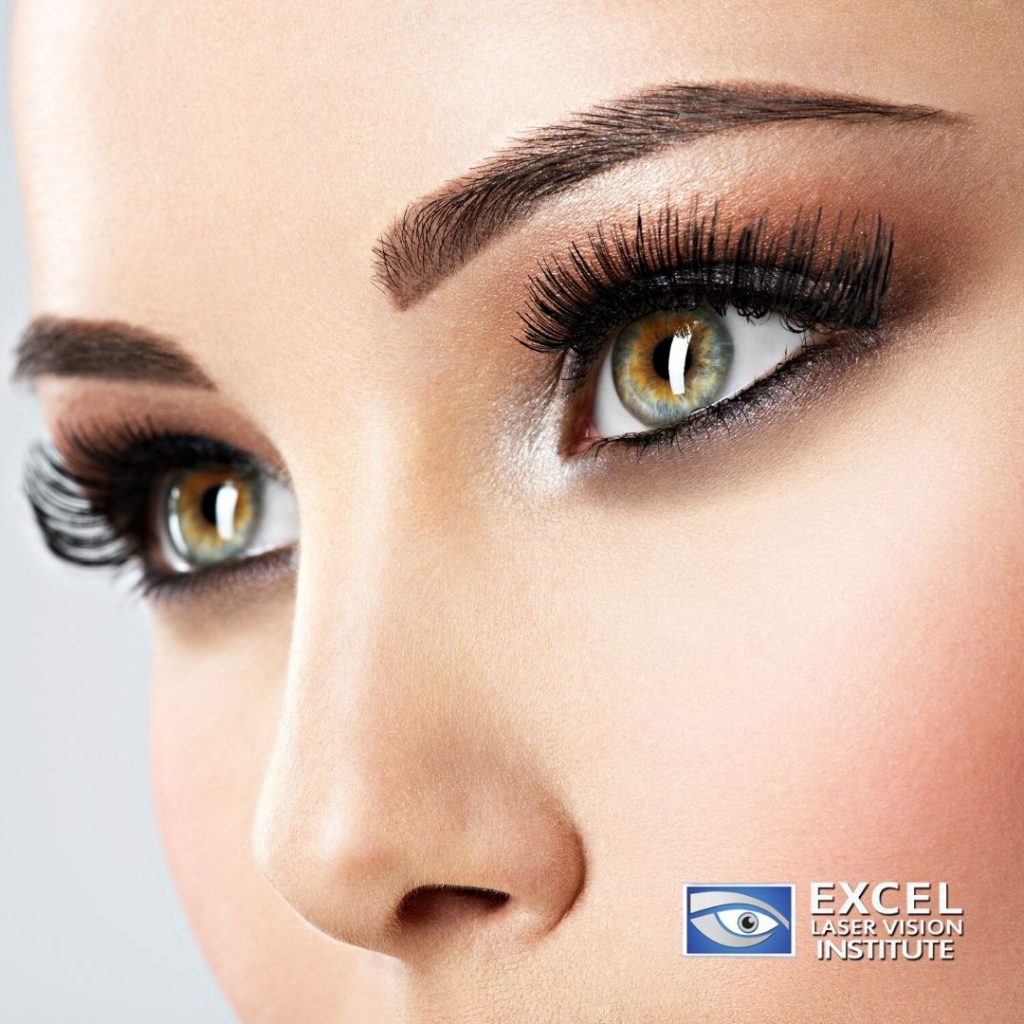
What Is Topography-Guided LASIK?
Contoura® Vision is a topography LASIK Orange County treatment that has recently been approved by the FDA as a LASIK surgery technology available in the United States.
This recent technology has one-of-a-kind capabilities that support the LASIK surgeon in Orange County to a significant level of individual personalization. This new procedure has reevaluated the phrase “quality of vision” with research exhibiting that many patients encountered better vision than they have ever experienced with glasses or contact lenses.
The LASIK surgeon in Orange County describes how Contoura Vision topography-guided LASIK, technology provides surgeons with more detailed information on the structure of the cornea than previous generations of LASIK procedures.
The information supported by the topographer measures the individual characteristics of each person’s eyes that cannot be measured with long-established technology. This information supports an individual profile for each eye that surgeons can use to carry out personalized laser eye surgery procedures.
Furthermore, topography-guided LASIK has proven to enhance vision just the same (or even better) than glasses or contact lenses for many patients.
Am I A Good Candidate For Topography-Guided LASIK?
Before you can actually get Contoura Vision performed on your eyes, you have to find out from your ophthalmologist if you are a suitable candidate. This innovative, new treatment will be available for many patients with vision issues, but not for all. Currently, topography-guided LASIK is for patients that are nearsighted, with and without astigmatism.
If you suffer from astigmatism, topography-guided LASIK may be the answer to your vision problems. This new eye laser procedure is particularly advantageous to patients with astigmatism since no two astigmatism patterns are alike.
Contoura is a type of personalized LASIK procedure that focuses on these variations more precisely than a surgeon could ever achieve. A comprehensive consultation at the Excel Laser Vision Institute can help you determine if you are suitable for a topography-guided LASIK eye procedure.
How Does Topography-Guided LASIK Work?
Your eye surgeon uses the topographer and WaveLight EX500 Excimer Laser simultaneously. The procedure alters the shape of the patient’s cornea, greatly enhancing vision. Since the topography-guided LASIK procedure is distinctively individualized to each patient’s cornea, the risk of feeling light sensitivity, glare, and halos after the procedure is scaled-down.
The personalized treatment uses an assortment of very detailed images on each of the patient’s eyes, to evaluate a patient’s particular vision correction requirements. The patient’s eye is rendered and studied using 22,000 unique elevation points on the cornea. Then, this data is sent to a surgical planning computer to create an individualized, custom-made profile to improve the patient’s vision.
This type of diagnostic technology can precisely identify and record aberrations in the cornea’s curvature as well as its optics. During the LASIK procedure, this data is combined with the patient’s corrective eyewear prescription to significantly enhance vision for patients suffering from nearsightedness (myopia) and astigmatism. Although standard LASIK surgery has been helping patients improve correct visual refractive errors for many years, Contoura™ Vision sets the bar higher by providing even greater levels of enhanced vision quality.
What Does Topography-Guided LASIK involve?
When it comes to the procedure, there isn’t a big difference between Topography-Guided LASIK, since the patient goes through the same steps as they would for a traditional LASIK procedure.
An eye surgeon performs LASIK by creating tiny changes to the shape of the cornea. The topography-guided LASIK can provide an eye surgeon with an outstanding outline of the patient’s eye structure. A topography-guided LASIK procedure usually lasts fifteen minutes. Many patients report little to no discomfort during the surgery.
What To Expect With Topography-Guided Recovery?
Many LASIK patients recognize dramatic visual enhancements right after their Contoura Vision LASIK procedure. However, recovery time is different for each patient. A few patients with higher prescriptions might recover more gradually than patients who do not have severe eye problems. Besides resting with protective eye shields in a postoperative room for at least an hour, your eye surgeon will recommend the following:
- Designate a driver to take you home after surgery and pick up any medications that your eye surgeon may have prescribed to you.
- Do not rub your eyes and keep them clean.
- Rest at home for a few hours with your protective eye shields.
- Make sure to follow up on additional postoperative instructions the surgeon may provide you.
It is not unusual to have slight to moderate discomfort during the first days after surgery as your eyes heal. A few patients experience small reactions after surgery such as watery or red eyes for the first couple of days after the procedure, but others are able to go back to work the following day.
Normally, your eye surgeon will prescribe medications to help with any discomfort and will schedule a follow-up appointment the next day to test the patient’s vision and make sure their eyes are healing correctly.
What Are The Topography-Guided LASIK Benefits?
Although LASIK can transform a person’s life, because it enhances their lifestyle and gives them more freedom, many topography-guided LASIK patients report experiencing better vision quality than they ever had with glasses or contacts. Other benefits include the following:
- An eye surgeon has a better outline of the patient’s eye structure.
- It allows more unique customization for personalized vision correction.
- It was created to improve the results of LASIK.
- It can be particularly helpful for patients with astigmatism.
Similar to other LASIK vision correction procedures, topography-guided LASIK can be used to fix many common vision problems. A well-trained eye refractive surgeon such as Dr. Ferzaad Moosa at the Excel Laser Vision Institute can help you decide on the best option for your vision problems. If you have any more questions about LASIK vision correction procedures, give the Excel Laser Vision Institute a call at + (818) 907-8606 to arrange an appointment today.

Refractive Surgery Explained
The LASIK surgeon in Orange County explains that refractive surgery is the term used to define surgical procedures that correct common vision issues such as nearsightedness, farsightedness, astigmatism, and presbyopia in order to reduce or eliminate your dependence on prescription eyeglasses and contact lenses.

At the moment, a laser procedure called LASIK (LAY-sik) is the prevalent refractive surgery performed in the United States. However, many LASIK Orange County patients are not aware of the other types of refractive surgery that are available at the Excel Laser Vision Institute, including other laser procedures that could be a more suitable choice for you, depending on your requirements.
Below are a few options in vision correction surgery that may be better options for you.
PRK Laser Eye Surgery
PRK (photorefractive keratectomy) is a type of refractive surgery that corrects myopia (nearsightedness), hyperopia (farsightedness), and astigmatism.
It is quite interesting to know that PRK was the first type of laser eye surgery created for vision correction and is the near ancestor of the very popular LASIK procedure.
Although PRK recovery can take a slightly longer time than LASIK recovery, PRK is still widely performed and provides certain advantages for some patients.
Similar to LASIK and other forms of laser eye surgery, PRK surgery involves reshaping the cornea using an excimer laser, allowing light to enter the eye to be correctly focused onto the retina for clear vision.
The primary difference between PRK and LASIK is the first step of the procedure.
During LASIK, a thin flap is created on the cornea with a microkeratome or a femtosecond laser. This flap is lifted to reveal the underlying corneal tissue and is replaced after the cornea is reshaped with an excimer laser.
When PRK is performed, the thin outer layer of the cornea (epithelium) is removed and discarded before reshaping the underlying corneal tissue with an excimer laser. The epithelium repairs itself since it can grow back over the corneal surface within a few days after surgery.
LASEK Laser Eye Surgery
An alternative to PRK is a procedure called LASEK, which is also available to patients looking for solutions for vision problems.
Rather than removing the outer epithelial layer of the cornea as PRK does, LASEK consists of lifting the epithelial layer using a surgical instrument called a trephine, preserving it during surgery, and then putting it back on the eye’s surface at the end of the procedure.
The LASIK surgeon in Orange County says that LASEK has become less popular over the years because of the slower recovery process in contrast to PRK. The replaced epithelial layer takes longer to recover in LASEK than the growth of a new epithelial layer in PRK.
SMILE Laser Eye Surgery
Patients that come in for a consultation with the LASIK surgeon in Orange County are sometimes concerned with nearsightedness. Besides LASIK, there is a relatively new option for laser eye surgery called SMILE. SMILE laser eye surgery received FDA approval for use in the United States in September of 2016.
First of all, SMILE is an acronym for Small Incision Lenticule Extraction. Typically, a SMILE laser eye surgery is performed using a VisuMax femtosecond laser, which is a technology developed by Carl Zeiss Meditec.
During a SMILE procedure, the surgeon uses a femtosecond laser to make a small, lens-shaped piece of tissue, called a lenticule, within the cornea. Then, with the same laser, a small arc-shaped incision is created within the surface of the cornea, and the surgeon removes the lenticule through this incision and disposes of it.
In a SMILE procedure, only a tiny opening is required, about less than 4mm, for the eye surgeon to be able to remove the lenticule.
When the small lenticule has been removed, the shape of the cornea is changed, correcting nearsightedness. The corneal incision heals within a few days, without stitches, and sharper vision is achieved very rapidly.
Epi-LASIK Eye Surgery
Epi-LASIK is a laser vision correction procedure that almost works the same as LASIK and LASEK, and could be an excellent alternative to these procedures for particular eyes.
During an epi-LASIK procedure, the eye surgeon creates a flap on the cornea that is thinner than a LASIK flap. This is sometimes beneficial for patients who have thinner than normal corneas.
The epi-LASIK flap is identical to the thin flap created in LASEK surgery. In both types of eye laser procedures, the flap consists of only cells from the very thin outer layer of the cornea, called the epithelium.
The only difference is how the epi-LASIK and LASEK flaps are created.
A LASEK flap is produced with a tool that includes a sharp blade. In epi-LASIK, the flap is separated from the underlying corneal layer, which is called the stroma, with an instrument referred to as an epithelial separator that has an oscillating plastic blade that has a thin blunt edge.
Also, unlike LASEK, an alcohol solution is not applied to the eye in epi-LASIK procedures. Some surgeons prefer epi-LASIK to LASEK for this very reason. Alcoholic solutions can be toxic to epithelial cells and can prolong the healing time after the procedure.
Once the epi-LASIK is created, it is folded back and the underlying central stroma is reshaped with an excimer laser, which is similar to LASIK.
Since the epi-LASIK flap is very thin, the surgeon usually applies soft contact lenses over the flap when it is repositioned after the laser treatment. The contact lens behaves as a sort of bandage to increase the patient’s comfort and support the growth of new epithelial cells on the cornea for swift healing.
Eventually, your eye surgeon will remove the bandage contact lens at one of the follow-up visits, a few days after the epi-LASIK procedure.
If you want further information about various refractive surgeries to improve your eyesight, give the Excel Laser Vision Institute a call at + (818) 907-8606. Our expert team of highly trained refractive surgeons can guide you step-by-step to the laser eye surgery that best suits you!

Comparing Blade And Bladeless LASIK
LASIK, which is an abbreviated form for laser-assisted in situ keratomileusis, is the most well-known type of laser vision correction at the LASIK Los Angeles clinic like Excel Laser Vision Institute. Ever since it was first approved by the FDA in 1999, it has transformed the vision of about 10 million Americans.

Surgeons at this LASIK eye center in Los Angeles use this form of eye surgery to successfully treat refractive eye conditions such as myopia (nearsightedness), hyperopia (far-sightedness) and astigmatism.
If you need laser vision correction and have looked into having LASIK in Los Angeles, you may know that there are currently two options available. These options are traditional and bladeless LASIK. So, which should you choose? Take a look below for a comparison between traditional and bladeless LASIK surgery.
The Difference Between Blade vs Bladeless LASIK
The main difference between traditional and bladeless LASIK belongs in the creation of the flap. The flap is undoubtedly an important aspect of the LASIK procedure. The eye surgeon creates the flap in the top layer of the cornea, called the epithelium, and it is lifted to achieve access to the tissue beneath.
This underlying tissue is what your LASIK Los Angeles surgeon reshapes using a laser, to make the eye refract light correctly. After a short healing period, the patient can see clearly with little to no need for glasses or contact lenses.
When an eye surgeon performs traditional LASIK, it involves the use of an instrument called a microkeratome. A microkeratome has a very small oscillating blade that is used to manually make the incision that will create the hinged flap. Then, the surgeon uses suction to hold the eye in place, and the LASIK laser vision correction is performed using laser technology. Once the procedure is over, the flap is placed back over the cornea and left to heal naturally. No sutures are required for the healing process.
As the name suggests, bladeless LASIK does not involve the use of a microkeratome. Instead, the eye surgeon makes an incision required to create the flap using a high-energy, femtosecond laser. This laser gives off pre-programmed short pulses of energy that form the incision. When the flap has been created, the flap is lifted so that LASIK can be carried out on the underlying tissue.
The Advantages Of Traditional LASIK
The most considerable advantage of traditional LASIK is that this technique has an evident track record of success. Today, LASIK is over twenty years old and general success rates are very high. The latest research has shown that LASIK has a 99% success rate in helping patients attain 20/40 vision or better, with 90% receiving 20/20 vision or even better. Furthermore, complication rates are very low. While bladeless LASIK is equally successful, it has a shorter history.
When it comes to cost, mechanical microkeratome systems are less expensive to purchase and maintain. Also, traditional LASIK is less expensive for patients than bladeless treatment. Some LASIK surgeons have not invested in the advanced laser system required for a bladeless laser, which is also considerably more expensive to purchase.
When comparing speed, many patients are shocked to learn that even though both procedures are reasonably short, in terms of the time it takes to perform them, traditional LASIK can be carried out faster than bladeless LASIK.
The Advantages Of Bladeless LASIK
The IntraLase was the first FDA approved bladeless flap-making system in the United States. It was acquired by Advanced Medical Optics (AMO) in 2007 and blended into the company’s CustomVue excimer laser platform, which is now sold under the brand name iLASIK.
In addition to IntraLase, other bladeless LASIK systems include zLASIK (Ziemer Ophthalmic Systems), Femtec (2010 Perfect Vision) and Visumax (Carl Zeiss Meditec).
One of the most predominant advantages of bladeless LASIK is fewer flap-related complications. Issues concerning the flap are one of the most common complications that can occur from traditional LASIK laser vision correction. This is due to the mechanical nature of the microkeratome system, which can experience lost power, jammed mechanical parts, or loss of suction.
If this occurs, it can cause a variety of issues with the flap including a partial/incomplete flap, a flap without a hinge, that is referred to as a free cap, or other aberrations with the shape of the flap which can undermine healing. These complications are very infrequent in bladeless LASIK.
During traditional LASIK, the hinge for the flap usually occurs in the same location. However, every patient is different and, for some, it may be suitable to customize the hinge position. This is only achievable using bladeless LASIK.
Many LASIK experts and surgeons debate about the level of precision and accuracy, along with uniformity, which is more significant in bladeless LASIK. Since the laser can be pre-programmed with the particular measurements required, there is no room for manual error. Problems that can occur with traditional LASIK include inconsistencies in the flap edge and uneven flap thickness. Bladeless LASIK can avoid this.
Studies have concluded that the recovery rate for patients who have undergone bladeless LASIK is swifter and smoother. As a matter of fact, many patients can get back to work within 24 hours of their treatment. This fast recovery makes bladeless more convenient for many patients with a full schedule.
Traditional and bladeless LASIK are both very successful and effective treatments for dealing with refractive errors. If you have had previous corneal surgery, microkeratome LASIK may be required. Sometimes, with all-laser procedures, water bubbles can form and penetrate previous incisions, meddling with the focusing (reshaping) laser.
The choice between traditional and bladeless LASIK usually depends on the patient’s preference and their ophthalmologist’s opinion. At the Excel Laser Vision Institute, our ophthalmologists have many years of experience in performing LASIK.
If you are considering LASIK, Dr. Ferzaad Moosa, a Harvard trained laser eye surgeon, can consult with you in order to decide which LASIK procedure is suitable for your eyes.
If you want more information about LASIK surgery, give the Excel Laser Vision Institute a call at (818) 907-8606, or fill out our contact form today!

Understand Cataract Surgery Better
Every year, over 3 million Americans have cataract surgery. Over 98% of these cataract surgeries are successful. Taking into account the number of aging people who have faced blindness from cataracts, the arrival of modern cataract surgery serves as a marvel of medicine!

What Are Cataracts?
Normally, cataracts occur as a person ages. These age-related cataracts are a gradual clouding of the lens tissue, which is inside the eye behind the iris.
This modification in the lens tissue can involve one or both eyes. When it comes to age-related cataracts, one eye usually deteriorates quicker than the other, but both will eventually need treatment at a LASIK eye center in Los Angeles such as the Excel Laser Vision Institute.
Refractive and LASIK Los Angeles surgeons explain that cataracts happen when proteins in the lens of the eye become glycated to the point that clearness dwindles away. As a result of this gradual deterioration of visual quality, the patient needs to have their cataracts corrected with surgery or they will go blind.
What Is Glycation?
Glycation is the cause of cataracts according to refractive and LASIK Los Angeles surgeons at the Excel Laser Vision Institute. It is the pathologic binding of a sugar molecule to the body’s proteins or lipid molecules that bring about the formation of non-functioning tissue structures. The lens of the eye is particularly defenseless to this type of degradation. Some of the nutrients that help to prevent glycation include carnosine, benfotiamine, glutathione, and activated forms of vitamin B6 (pyridoxal-5-phosphate).
The following factors can increase a person’s chances of getting cataracts:
- Diabetes
- Sunlight exposure
- Cigarette smoking
- Eating foods cooked at high temperatures
- Hypertension
- Blunt trauma to the eye
- Electrical shock
- All forms of radiation, especially ultraviolet light (specifically UVB)
- Corticosteroid drugs
Although, the most common cause of cataracts is aging.
40% Less Risk Of Mortality
It is proven that cataract surgery can benefit patients by more than just restoring their vision. Cataract surgery could actually make you live longer!
A recent study analyzed a five percent irregular sample of U.S. Medicare beneficiaries with cataracts within the years of 2002 to 2012 to look at the effects of cataract surgery on the risk of death. As a result of this study, cataract surgery contributed to a slight decrease in mortality incidence.
Of the 1.5 million cataract patients in the study, 36 percent had cataract surgery. Patients who underwent surgery had a mortality incidence of 2.78 deaths per 100 person-years, compared to 2.98 deaths per 100 person-years among patients who did not undergo surgery. The strongest connection was in women, aged 80 to 84 years old, residing in the western United States suffering from severe cataract and moderate systemic disease burden.
16% Fewer Odds For A Hip Replacement
Besides having a clearer, more colorful vision after cataract surgery, it could also help prevent hip fractures. A study that came out in the Journal of the American Medical Association (JAMA) claims that fixing cataracts can lower the risk of breaking a hip.
It may sound odd that cataracts can affect hip fractures, but there is a more logical connection than you might think. Since better vision can help a person navigate a new environment and achieve better balance, this will decrease their chances of bumping into objects or, even worse, falling down.
The effects of cataract surgery were analyzed on the frequency of hip fractures in the following year after the surgery took place. In a group of more than a million adults ages 65 and older who had cataract surgery, they found that:
- about 1.3% suffered hip fractures
- the frequency of hip fracture was 16% lower among those who had cataract surgery compared with those who didn’t have it.
- the reduced risk was even more (23%) if the cataract was severe.
These are amazing and critical findings. They provide extra incentives for people with cataracts who are considering having cataract surgery.
13% Fewer Car Crashes
Having cataract surgery can greatly reduce car crashes involving senior drivers and, as a result, lower the cost of accidents to the community.
There was a recent study that focused on 2,849 drivers, 60 years of age and older in Western Australia, all of whom had cataract surgery on both eyes and were involved in car crashes as the driver. The study found that participants were less likely to be involved in car crashes in the year following their procedure as compared to before.
Refractive and LASIK Los Angeles surgeons noticed that there was a 61 percent reduction in crash risk after these drivers’ first cataract was removed and a 23 percent reduction in accidents after they had their second cataract procedure.
Greater Quality Of Life
Unfortunately, cataracts can prevent you from doing everyday tasks and the things you love to do for fun. Eventually, you will begin to feel less independent and more socially withdrawn.
A 2013 study revealed that the quality of life for patients who had cataract surgery in one eye showed 21% greater quality of life afterward and patients who had cataract surgery in both eyes felt their lives improved by 36 percent after surgery in contrast to those who did not undergo surgery at all.
Overall, because of cataract surgery, there has been a $123.4 billion cost advantage to society over the last 13 years.
Cataract surgery can give you the visual freedom you need and better improve your overall health. If you want further information about cataract surgery, give the Excel Laser Vision Institute a call at + (818) 907-8606 today.

